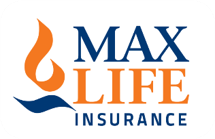Your Driving, Your Rate: The Power of Telematics in Usage-Based Insurance

Revolutionizing Auto Insurance: The Impact of Telematics and Usage-Based Insurance
In recent years, the auto insurance landscape has witnessed a revolutionary transformation with the advent of telematics and the rise of usage-based insurance (UBI). Telematics, the integration of telecommunications and informatics, has enabled insurers to gather real-time data on driving behavior, leading to a more personalized and dynamic approach to auto insurance. This article explores the profound impact of telematics on auto insurance, examining how usage-based insurance is reshaping the industry and benefiting both insurers and policyholders.
Understanding Telematics: Telematics involves the use of devices, often installed in vehicles, to collect and transmit data related to driving habits and patterns. These devices, commonly known as “black boxes” or dongles, record information such as speed, acceleration, braking, and even the time of day a vehicle is in use. This wealth of data provides insurers with a detailed and objective understanding of an individual’s driving behavior.
The Evolution of Usage-Based Insurance: Usage-based insurance leverages telematics data to tailor premiums based on an individual’s actual driving habits rather than traditional demographic factors. This shift from a one-size-fits-all approach to a more personalized model has numerous implications for both insurers and policyholders.
Benefits for Policyholders:
- Cost Savings: One of the primary advantages for policyholders is the potential for cost savings. Safe and responsible drivers who exhibit low-risk behaviors may enjoy reduced premiums compared to standard auto insurance policies.
- Fair Pricing: UBI promotes fairness by directly linking premiums to driving behavior. This departure from traditional rating factors like age and gender ensures that individuals are assessed on their merits rather than generalizations.
- Incentives for Safe Driving: Telematics encourages safe driving habits, as policyholders can actively monitor their behavior and make adjustments to potentially lower their insurance costs. This results in a win-win situation, with insurers benefiting from reduced claims and policyholders enjoying lower premiums.
Advantages for Insurers:
- Risk Mitigation: Telematics allows insurers to more accurately assess risk by evaluating real-time driving behavior. This enables better risk segmentation, helping insurers differentiate between high and low-risk policyholders.
- Improved Claims Processing: The availability of detailed telematics data expedites the claims process. Insurers can quickly determine fault and assess damages, reducing the time and resources traditionally associated with claim resolution.
- Customer Engagement: UBI fosters a more engaging relationship between insurers and policyholders. By offering feedback on driving behavior and potential premium reductions, insurers can enhance customer satisfaction and loyalty.
Challenges and Considerations: While the benefits of UBI are significant, challenges exist. Privacy concerns related to the collection and use of sensitive driving data must be addressed. Striking a balance between data utilization and privacy protection is crucial to the continued success and acceptance of UBI.
The Future of Telematics in Auto Insurance: As technology continues to advance, the integration of telematics into auto insurance is expected to deepen. Artificial intelligence and machine learning will likely play pivotal roles in analyzing vast datasets, leading to even more accurate risk assessments and personalized premium structures.
Usage-based insurance, fueled by telematics, is reshaping the auto insurance landscape. The ability to tailor premiums based on individual driving behavior benefits both policyholders and insurers. As the industry continues to embrace this transformative approach, the future holds exciting possibilities for a more equitable, engaging, and efficient auto insurance experience.








